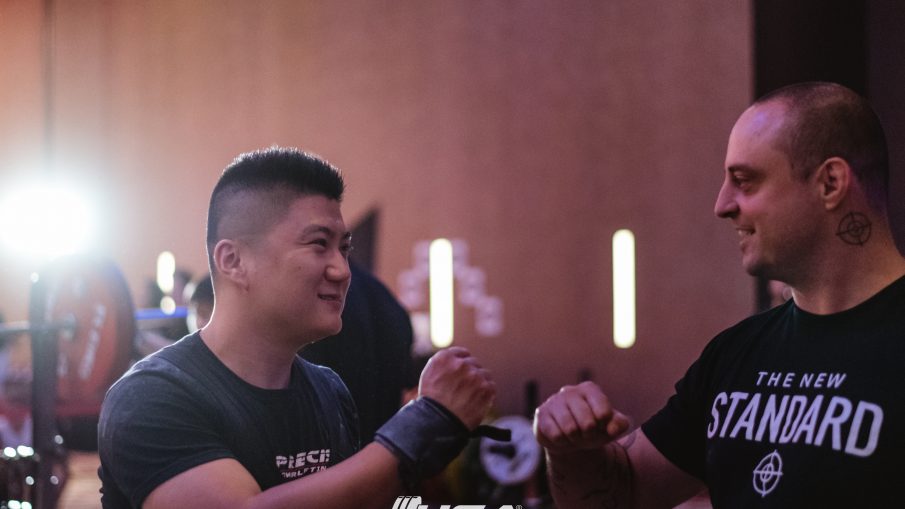Written by: Kevin Cann
This was an important realization for me, to coach the person and not the lifts. At some point everyone will hit a period of stagnation. This is inevitable. The key to overcoming these periods of stagnation is in understanding the person. Of course, identifying weaknesses and all that is important, but in my experiences, it is only half of it.
I will use a real-life example to explain my point. Mike D’Amico had been hitting very small total PRs at each competition for about 2 to 2.5 years. 2.5kg here, 5kg there. This is great, and progress is progress, but this is a bit under from where we should be.
We did not change the plan at all. I was confident that we were making the right decisions there. Instead, the focus became more on Mike working on himself internally. Too often our emotions and fears will drive decision making in the gym. When we try to chase PRs, they will run away. Instead, we need to hunt them by being cunning and smart. Lying in the tall grass waiting for them to come near and then we pounce.
Mike did that internal work to let go of trying to force things. He learned more about the training process and was able to make decisions that were not clouded by emotions and fears. This allowed him to stack quality training day after quality training day for about a 6-month period of time.
This led to a 20kg total PR to go alongside 5kg PRs on each of the three lifts. This was also conservative with attempt selection as he hit a tad more in the gym. The only thing that changed over 6 months was Mike. It wasn’t the program, or anything that I did as a coach. It was him putting the work in and maturing as a lifter and as a person.
Coaching is found in that human experience. A lifter can’t get better or reach their full potential if they are in their own way. Insecurities, fear of failure, fear of what other people think, and the comparison trap are some of the biggest obstacles lifters will face in hitting PRs.
Training for powerlifting is simple, but humans are complex and high performance is a complex problem. At the center of this problem is the human experience and this needs to be addressed first. High performance is derived from the inside out and not the outside in.
Too often lifters and coaches think that the program is the answer. Of course, some are better than others, but the true value in a program is the ability to understand it and make the appropriate adjustments. That program and those adjustments mean nothing without the context that the individual brings to it.
This is why we see such a variety in performance by people doing the same program. We are all different, but we really aren’t that different. An inside out approach is using the program to identify areas that each person needs to work on. Many of these are personal character traits. Changing the program to meet them where they are at will only work for so long. At some point progress will stall until they work on who they are as a person.

